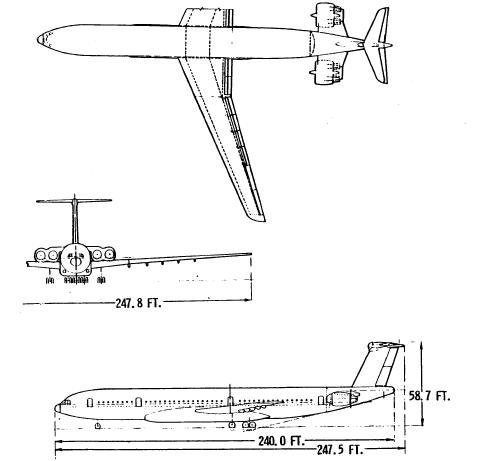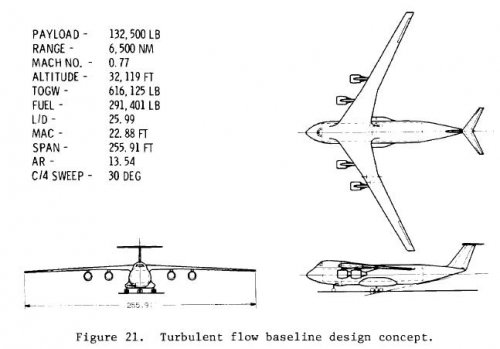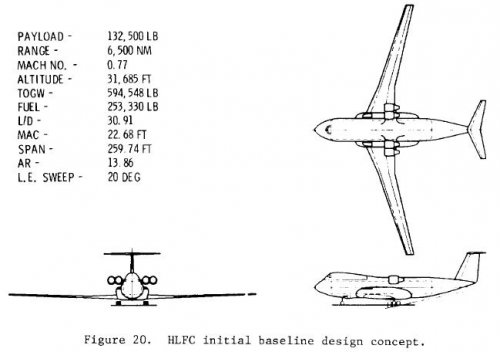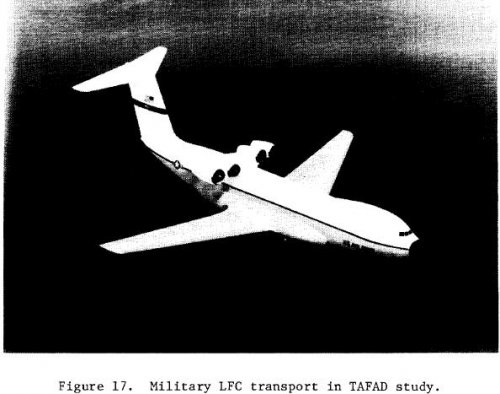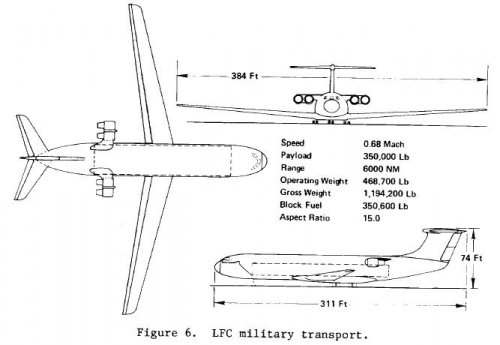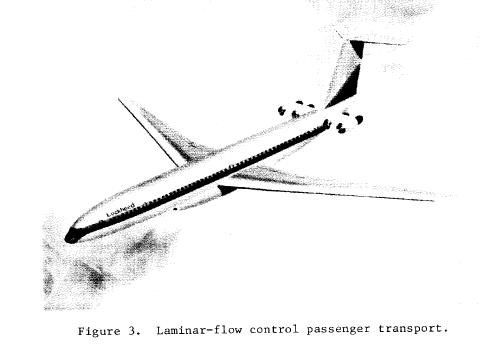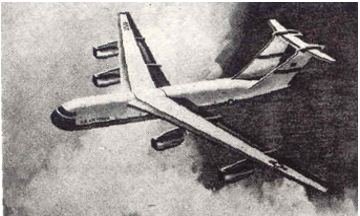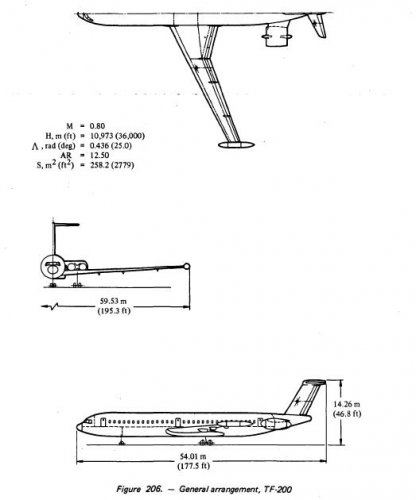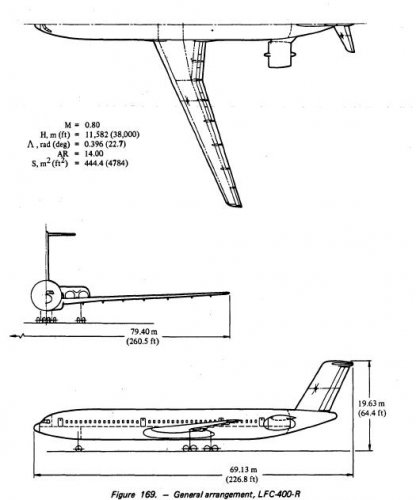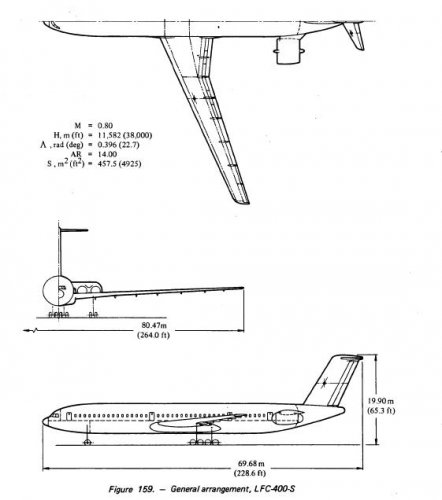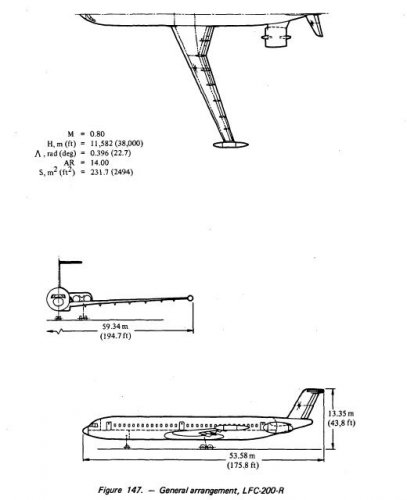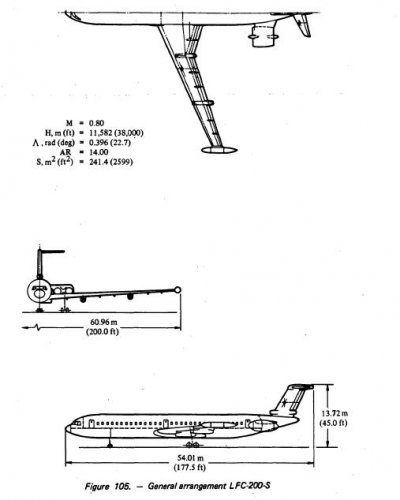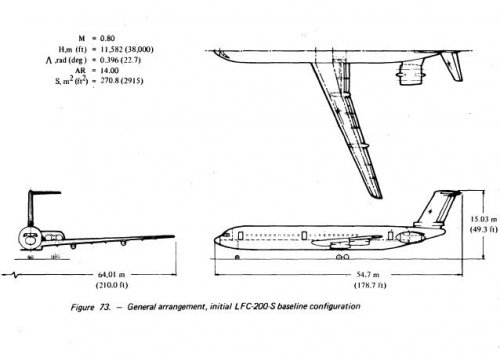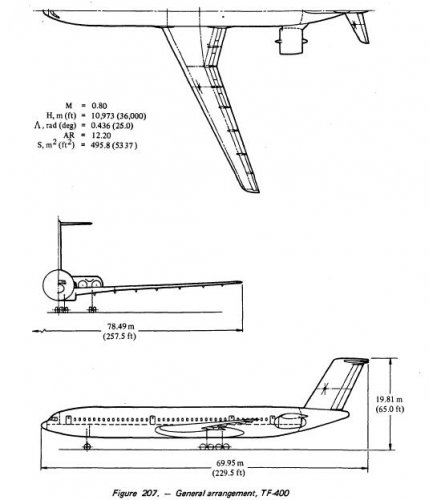You are using an out of date browser. It may not display this or other websites correctly.
You should upgrade or use an alternative browser.
You should upgrade or use an alternative browser.
Lockheed Laminar Flow Control LFC wing aircraft of 1993
- Thread starter hesham
- Start date
- Joined
- 26 May 2006
- Messages
- 34,922
- Reaction score
- 15,794
Hi,
anther Lockheed LFC aircraft,notice the differents between the projects for military
aircraft.
http://ntrs.nasa.gov/archive/nasa/casi.ntrs.nasa.gov/19900003190_19990003190.pdf
anther Lockheed LFC aircraft,notice the differents between the projects for military
aircraft.
http://ntrs.nasa.gov/archive/nasa/casi.ntrs.nasa.gov/19900003190_19990003190.pdf
Attachments
Getting a "404: Page Not Found" error from the link above.
http://ntrs.nasa.gov/archive/nasa/casi.ntrs.nasa.gov/19900003190_1990003190.pdf
Lange, Roy H. Lockheed Laminar-Flow Control Systems Development and Applications Lockheed-Georgia Company (Dec 1, 1987)
Abstract:
http://ntrs.nasa.gov/archive/nasa/casi.ntrs.nasa.gov/19900003190_1990003190.pdf
Lange, Roy H. Lockheed Laminar-Flow Control Systems Development and Applications Lockheed-Georgia Company (Dec 1, 1987)
Abstract:
Progress is summarized from 1974 to the present in the practical application of laminar-flow control (LFC) to subsonic transport aircraft. Those efforts included preliminary design system studies of commercial and military transports and experimental investigations leading to the development of the leading-edge flight test article installed on the NASA JetStar flight test aircraft. The benefits of LFC on drag, fuel efficiency, lift-to-drag ratio, and operating costs are compared with those for turbulent flow aircraft. The current activities in the NASA Industry Laminar-Flow Enabling Technologies Development contract include summaries of activities in the Task 1 development of a slotted-surface structural concept using advanced aluminum materials and the Task 2 preliminary conceptual design study of global-range military hybrid laminar flow control (HLFC) to obtain data at high Reynolds numbers and at Mach numbers representative of long-range subsonic transport aircraft operation.
Lange, Roy H. Application of Hybrid Laminar Flow Control to Global Range Military Transport Aircraft Lockheed-Georgia Co. (Apr 1, 1988)
Abstract:
Abstract:
http://ntrs.nasa.gov/archive/nasa/casi.ntrs.nasa.gov/19880011740_1988011740.pdfA study was conducted to evaluate the application of hybrid laminar flow control (HLFC) to global range military transport aircraft. The global mission included the capability to transport 132,500 pounds of payload 6500 nautical miles, land and deliver the payload and without refueling return 6500 nautical miles to a friendly airbase. The preliminary design studies show significant performance benefits obtained for the HLFC aircraft as compared to counterpart turbulent flow aircraft. The study results at M=0.77 show that the largest benefits of HLFC are obtained with a high wing with engines on the wing configuration. As compared with the turbulent flow baseline aircraft, the high wing HLFC aircraft shows 17 percent reduction in fuel burned, 19.2 percent increase in lift-to-drag ratio, an insignificant increase in operating weight, and a 7.4 percent reduction in gross weight.
- Joined
- 26 May 2006
- Messages
- 34,922
- Reaction score
- 15,794
Attachments
- Joined
- 26 May 2006
- Messages
- 34,922
- Reaction score
- 15,794
The Lockheed designations for those Laminar Flow Control aircraft is in the NASA
report; 19760017057_1976017057.
report; 19760017057_1976017057.
Attachments
hesham said:
Boeing

